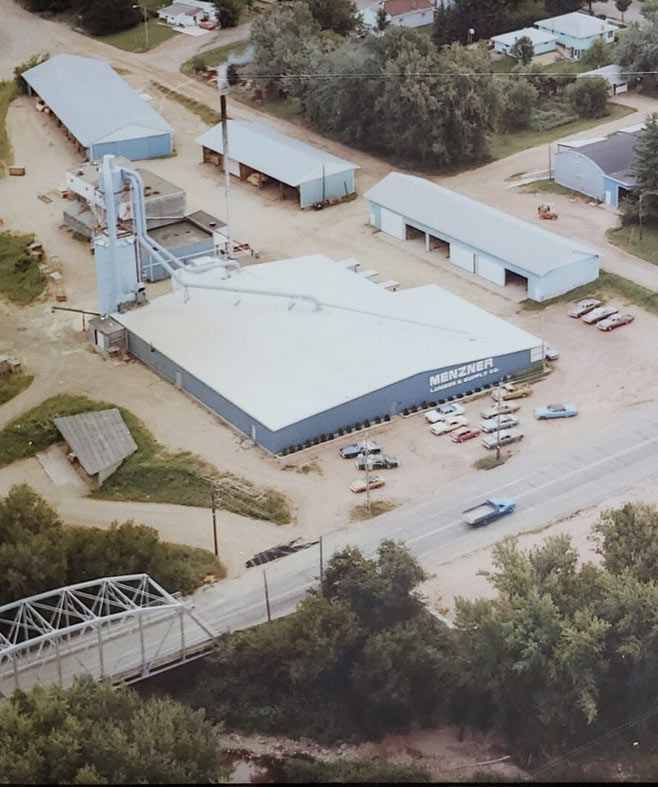
Contact Us

We offer only the best at Menzner Hardwoods and we keep every step of the process in the family—business, that is. Combined with our enduring 125 year heritage, along with the skilled talent that we deploy, Menzner Hardwoods is here to meet your every need.
At Menzner Hardwoods, our vertically integrated manufacturing and distribution operation set us apart from all others. It provides us with the unique ability to take our products from the woods to the shelf, quickly and with ease. Proud of our in-house services, we truly offer a one-stop-shop opportunity for our customers. Everything from Menzner Hardwoods is under the same roof. We understand that this is a strong competitive advantage for the customers that we serve, and we are doing what it takes to stay dynamic and nimble in the markets in which we compete.
Finally, you should know that at Menzner Hardwoods you can expect an ever-changing mix of innovative diversified products, tremendous flexibility, and speed-to-market capabilities. Give us a call, we are ready to serve and will provide you with the extraordinary customer service that you have come to expect.

Menzner Hardwoods WI
105 Main Street PO Box 217
Marathon, WI 54448
1 (715)-443-2354

Menzner Hardwoods KY
339 Arthur Drive
Somerset, KY 42501
1 (606)-802-7700

Menzner Hardwoods MS
7111 Weir Panhandle Road
Weir, MS 39772
1 (662)-547-5009

Menzner Hardwoods SC
102 SW Jefferson Road
West Union, SC 29696
1 (864)-638-9515
Hours of operation are Monday - Friday, 6:00 a.m. - 4:00 p.m. CST.
-
For customer
Call 800-257-1284
service inquiries -
For transporting
Call 800-451-3986
lumber & products -
For trading & purchasing
Call 800-257-1284
hardwood lumber
Competitive Quote
Contact today our specialists to request a quote!
Frequently Asked Questions
The decision to either paint or stain your mouldings is ultimately a personal choice and can be decided based upon what look you are attempting to create, along with the décor of your home. Painting your millwork is currently taking center stage in the décor industry (see painting instructions). If you decide you are interested in highlighting the woodgrain and warmth of your product, you will then need to decide if a clear top coat or a colored stain will achieve the look that you are after.
If you decide the painted look is what you want to achieve, we recommend that you use our finger-jointed primed poplar products. These product are sold with two coats of latex primer already applied. Following our finishing/painting instructions will give you a beautiful look to enhance your home.
Finishing instructions:
- There is no need to apply any additional primer to our product
- Pieces should be lightly sanded before applying the top coat
- Preferred topcoats: waterborne latex, waterborne acrylic, and waterborne acrylic/blends
- Acceptable Topcoats: Alkyds and Conventional acrylic lacquers (non-catalyzed)
Any name brand of paint is acceptable; however, it is extremely important that you follow the instructions on the can of paint. One coat of topcoat should suffice as excessive film build up can be counterproductive in any finishing system. Please also review recommended temperature for painting. The entire finishing process should be tested on a sample piece prior to completing your entire job to insure an acceptable, lasting result.
There is no right or wrong answer to this question. Wood mouldings can be used in any application to achieve the look you desire. Industry standards are outlined as to the general use of each type of moulding:
- Astragal: A moulding, attached to one of a pair of swinging doors, against which another door strikes.
- Backband: A simple moulding sometimes used around the outer edge of plain rectangular casing as a decorative feature.
- Balusters: Usually small vertical members in a railing used between a top rail and the stair treads or a bottom rail.
- Base or Baseboard: A board placed against the wall around a room next to the floor to finish properly between floor and plaster.
- Base Moulding: Moulding used to trim the upper edge of interior baseboard.
- Base Shoe: Moulding used next to the floor on interior baseboard.
- Blue Stain: A bluish or grayish discoloration of the sapwood caused by the growth of certain mold like fungi on the surface and in the interior of a piece, made possible by the same conditions that favor the growth of other fungi.
- Bull Nose: the rounded end or edge of a wood member. i.e., bull nose starting stair tread, often used interchangeably with the term "nosed".
- Casing: Moulding of various widths and thickness used to trim door and window openings at the jambs.
- Chair rail: An interior double stuck moulding originally intended to be applied along the wall of a room to prevent the chair from marring the wall.
- Corner Blocks: Square blocks used in lieu of mitering the side and head casing.
- Cove Moulding: A moulding with a concave face used as trim or to finish interior corners.
- Crown Moulding: A moulding used whenever an interior angle is to be covered.
- Extension Jambs: Flat parts which are nailed to the inside edges of the window or door frame, so that it will fit a wider wall.
- Fillet: A narrow band of wood between two flutes in a wood membrane, a flat, square moulding separating other mouldings, in a stair work, a thin shoe or sub rail between balusters: sometimes "neck" mouldings.
